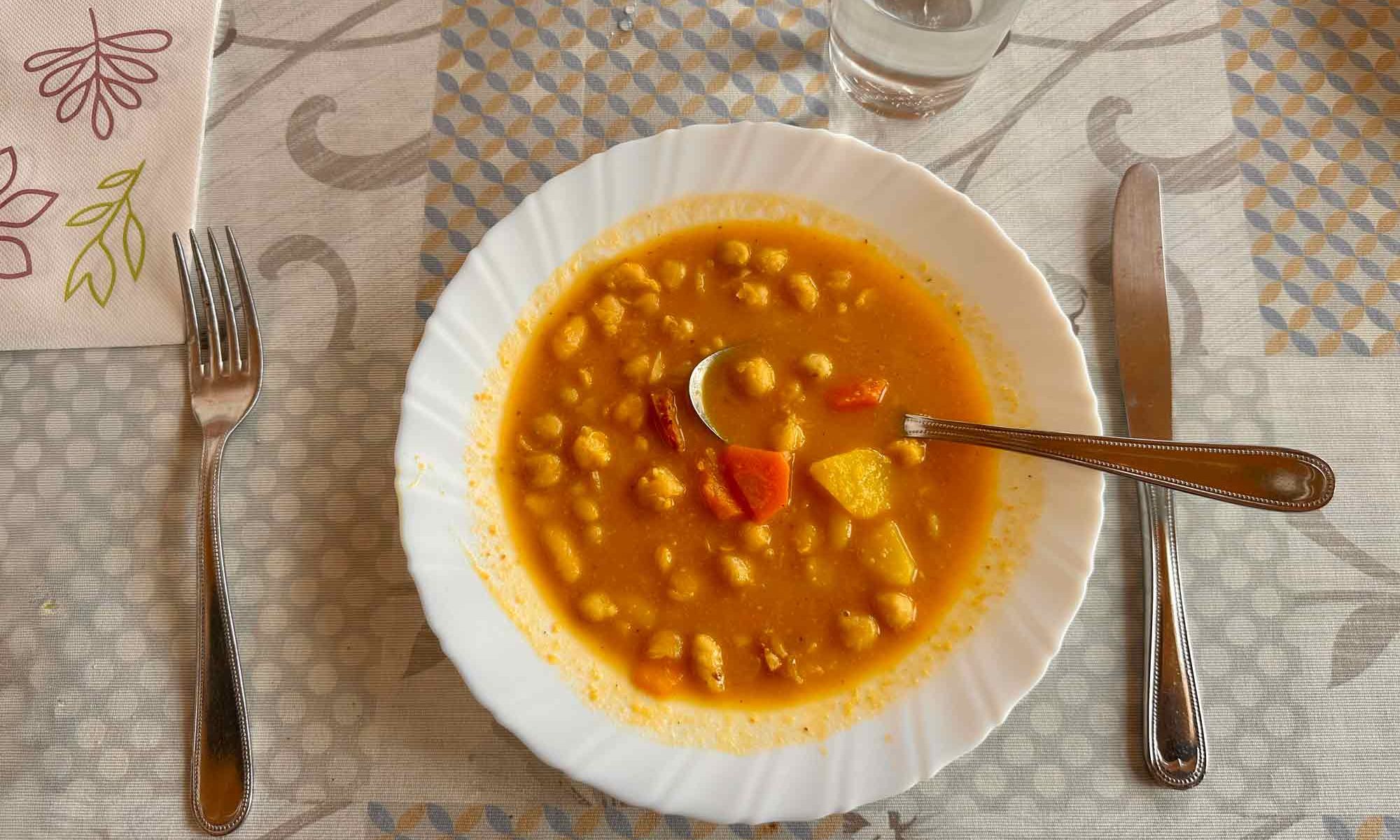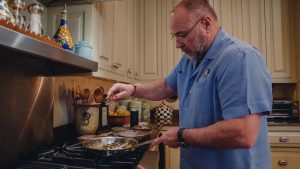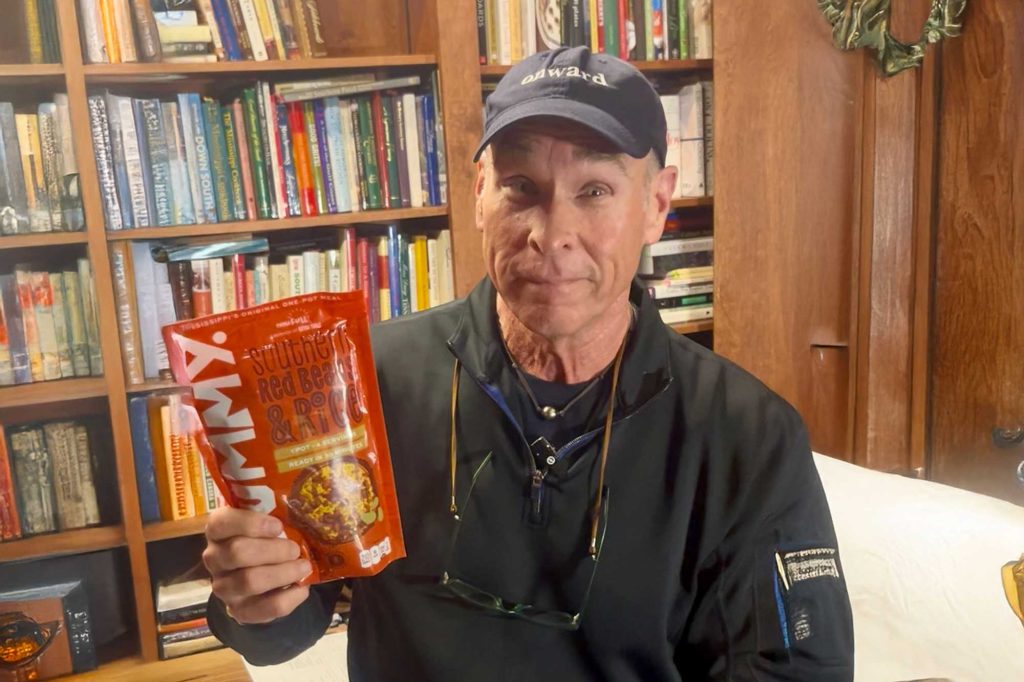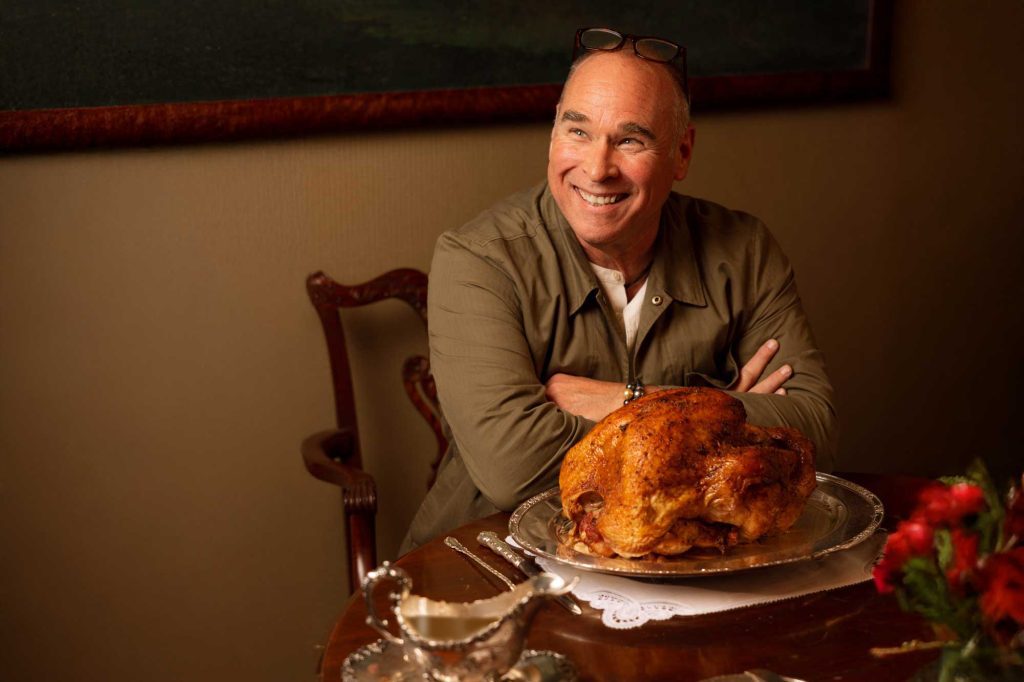No one signs up for a European tour expecting to have lunch in a stranger’s home in a village so small, it doesn’t show up on most maps. But that’s exactly where my guests found themselves—deep in the Andalusian hills, breaking bread in the homes of Spanish women who didn’t speak our language but knew exactly how to make us feel at home. This wasn’t a restaurant. There was no menu, no bill. Just food, laughter, and the kind of hospitality that sticks with you longer than any museum ever could.
The journey to get there felt like a step back in time—narrow roads winding past olive groves, cell signals fading with each turn. Eventually, we rolled into Alfarnatejo, a quiet village of less than 400 souls tucked into the mountains of southern Spain. No hotels, no tour buses, not even a café. Just whitewashed houses, stone paths, and a few kitchens where local mothers and grandmothers were already at work, stirring pots and setting tables for guests they’d never met.
This isn’t a place tourists typically find. And that’s exactly the point.
From day one, these RSJ Yonderlust tours were never meant to be surface-level sightseeing. The goal has always been to dig deeper—to take people beyond the postcards and into the heart of the place. I want them to taste, see, and feel what’s real. To connect, not just consume.
And that’s what brought my group to Alfarnatejo, Spain.
We’d already done the big things. Stood in front of El Greco, Goya, and Velázquez at the Prado in Madrid. Ate lunch in a cave. Zip-lined over a river in Toledo, then sat down for dinner on a rooftop in the shadow of history. We’d walked through the awe-inspiring Mezquita in Córdoba, strolled among Iberian pigs in Jabugo, taken flamenco lessons, and watched the real thing performed with all the passion and fire you’d hope for.
We crossed into Gibraltar, stood on one continent and looked across the water at another. Had fish and chips by the sea. Met the monkeys on top of the Rock. In Málaga, we cruised the Mediterranean at sunset and feasted on seafood by the shore. In Valencia, we watched the Fallas fireworks from a 10th-floor balcony with a catered lunch and full bar. Learned to make paella, then ate the whole thing. In Barcelona, we dined with my friend Chef Daniel Rueda—his ribs still as good as I remembered—and zipped through the streets in little GPS-guided, two-seater cars.
All of it was great. But, for me, nothing compared to this simple lunch in the homes of Spanish housewives.
On a quiet afternoon, we left the city behind, boarded a bus, and headed out into the hills. There were some puzzled looks. Maybe even a few of my guests were wondering if I’d lost my travel sense. But, in my years as a European travel host, I’ve learned this: when the road gets narrow, when the scenery turns wild, and the GPS doesn’t quite know where you are, that’s when the best stuff happens.
It started years ago in Tuscany. Some of the most authentic moments we had came after going the long way around. So now, I lean into it. That’s where the gold is.
Just as days earlier on a pig farm outside Seville. We walked a dirt trail into the cork trees and suddenly there they were—those big, content Iberian pigs, living a good life. From acorns to jamón, we saw the whole process. Real food. Real people. Real stories.
But this? This was something else entirely.
Instead of a farm or a restaurant, we were welcomed into private homes. No signs out front. No menu. Just a few gracious Spanish women, some with aprons and flour-dusted hands, waiting for us with warm smiles and hot ovens.
Each group of six-to-nine guests were sent to different houses, and each host cooked a meal from scratch—family recipes passed down for generations. Meatballs stewed in saffron. Potatoes slow-cooked in garlic and olive oil. Chickpeas, tomatoes, crusty bread, and maybe a little local wine for those who wanted it. There was no chef coat in sight. Just women who had cooked this way their entire lives. For their husbands, their children, their neighbors.
Now, for us.
There’s something about being invited into someone’s home that shifts the whole experience. It’s not performance. It’s not polished. It’s personal. They weren’t cooking for us, they were cooking with us in mind.
And we were honored to be there.

Out of the 60+ tours I’ve hosted—across Italy, France, England, Scotland, the Netherlands, and Spain—this is one of the most local things we’ve ever done. Only two of my groups have gotten to do it so far. This group in Spain was only the second to do it. It won’t be the last. If you’ve ever wondered what it feels like to travel this way—this is it.
Because this is the heart of it. This is what it’s all about.
When I started RSJ Yonderlust Tours, the idea wasn’t just to take people places. It was to bring them into places—into homes, kitchens, family tables. To go where the locals go. To eat what— and where— the locals eat. To step into real conversations, real culture, and leave with something more than souvenirs.
The museums and landmarks are great. So are the views and the big meals. But it’s the simple stuff—the kind you don’t plan for—that sticks. Sitting at a kitchen table in a little village, eating food made by somebody’s grandmother. That’s the part that stays with you. That’s what turns a trip into something real.
After Spain, I flew to Tuscany, where I’m with the first of three more groups. From here, it’s on to Holland and Belgium, then England and Scotland. Some of the folks on those tours have been with me eight times. Others, five or six. Yonderlust veterans. It might’ve looked like group travel on paper, but it never felt like it. That’s never been the RSJ Yonderlust Tours way. From day one, it’s just felt like friends exploring Europe together.
I’ll be home, ready to hit the ground running, in mid-May.
Over the years, more than 1,300 guests have traveled with me on these journeys. Each trip is different, but the mission is the same: dive deep, get local, connect. That’s the promise.
And that little lunch in a tiny Spanish village, cooked by women who may not speak our language but know exactly how to make us feel welcome—might be the best example of it yet.
Sometimes the best part of a trip isn’t something you planned. It’s a door swinging open, a meal made from scratch, and that quiet moment when it hits you—this is why you came. No app or itinerary can match what happens around a real table, in a real home, with people who mean it.
Onward.




